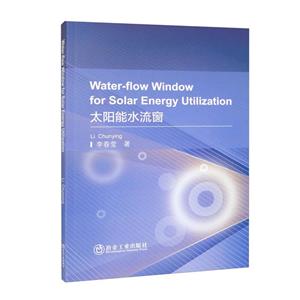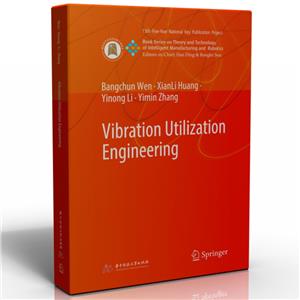
作者:李春莹
页数:147
出版社:冶金工业出版社
出版日期:2023
ISBN:9787502493981
电子书格式:pdf/epub/txt
内容简介
AbstractThe book introduces the development of advanced glazing, energy-saving oriented window designs and the related numerical models,and brought forward a water-flow window that combines the functions of daylighting, thermal insulation and solar thermal utilization.The numerical model and program of water-flow window were developed and successfully validated with experimental data. The program was used to calculate the annual thermal and energy performance and to analyze the influences of design parameters. Additionally, the comprehensive energy saving potential was assessed with the combination of ESP-r simulation platform and Radiance software. The energy consumption reduction and the pay-back period of water-flow window were estimated. Results demonstrated that water-flow window, as an innovative renewable energy utilization technology, has an extensive application potential in buildings with high density cooling load and constant demand of hot water. This book can be used as a reference book for architects, engineers and scholars in the field of building technology and energy conservation. It is also suitable for postgraduate students to learn engineering research methods.
作者简介
李春莹,博士,深圳大学建筑与城市规划学院、本原设计研究中心副教授。近年来,围绕绿色健康建筑、光伏建筑一体化开展研究,主持并参与完成多项高性能建筑围护结构、室内环境品质优化等研究项目,在国内外专业期刊发表中英文学术论文50余篇。
目录
1.1 Climate change and building energy consumption
1.2 Active solar designs
1.3 Passive solar design
Chapter 2 Solar Radiation and Windows
2.1 Solar radiation
2.2 Single-glazed windows
2.2.1 Clear glazing
2.2.2 Tinted glazing
2.2.3 Reflective glazing
2.2.4 Low-e glazing
2.2.5 PV glazing
2.2.6 Smart glass
2.3 Double-glazed windows
2.3.1 Air-sealed double-glazed windows
2.3.2 Gas-filled double-glazed windows
2.3.3 Evacuated double-glazed windows
2.3.4 PCM filled windows
2.3.5 Air-flow windows
2.4 Numerical research of advanced glazing design
2.5 Daylight utilization
Chapter 3 Water-flow Window
3.1 Water-flow window configuration
3.2 A scale-down experiment
3.2.1 Experimental setup
3.2.2 The monitoring facilities
3.2.3 System performance analysis
3.3 A full-size experiment
3.3.1 Experimental setup
3.3.2 The monitoring facilities
3.3.3 System performance analysis
Chapter 4 Numerical Modeling
4.1 Models development
4.1.1 Water-flow window
4.1.2 Air-gap window
4.2 Program validation
4.2.1 Validation with solar box experiment
4.2.2 Validation with full-size experiment
4.3 Year-round performance
4.4 Influencing factors analysis
4.4.1 Glazing properties
4.4.2 Heat exchanger dimension
4.4.3 Width-to-length ratio of the glazing area
4.4.4 Glazing direction and inclination
Chapter 5 Comprehensive Energy Performance
5.1 Simulation software
5.1.1 ESP-r
5.1.2 Radiance
5.1.3 Software integration
5.2 Validation of integrated simulation
5.2.1 Modeling water-flow window
5.2.2 Validation of visual environment simulation
5.3 Performance of water-flow window in a sport complex
5.3.1 Sport complex model
5.3.2 Simulation method and settings
5.3.3 Year-round performance analysis
5.3.4 Performance during typical summer week
5.3.5 Year-round AC system load
5.3.6 Effect of daylighting control
5.3.7 Overall effects on building energy consumption
References















